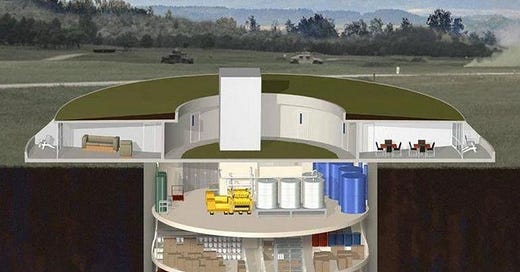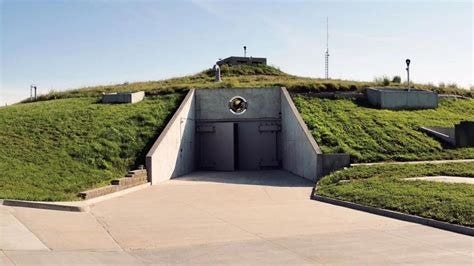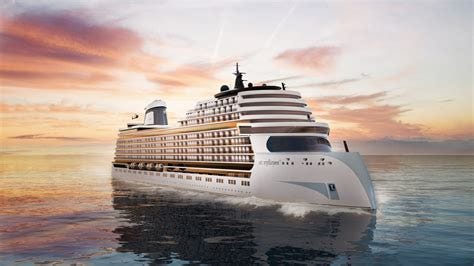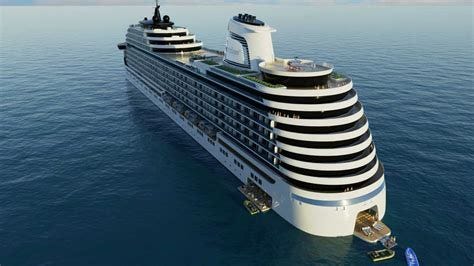Which is the inside and which is the outside? It will soon turn out.
It has been a question in the last two years: how can one survive the incoming collapse? My readers had a discussion on the topic:
Until now, preparing at home and moving off-grid have been considered. Still, there are other options.
Creating a survival community
How can such communities be defended from looters? It’s going to be a war of attrition, because your attackers will have nothing to lose and they will come in waves. Securing perimeters is a challenge and ammo has the sad tendency of eventually running out.
Water, food, and energy must be secured, along with people who can practice a trade from the pre-industrial era. Fat chance.
Hunting and fishing will be dangerous and the sources will be rapidly depleted. Growing your own stuff requires years of preparations and quite a bit of experience. Food storage also poses an often-insurmountable challenge. Foraging cannot maintain a community that is large enough to fend for itself.
The variable that makes it even worse is that you must decide: are the people you are joining to be trusted? How will your nice neighbor behave once his children are starving and he thinks you have food reserves? The outcome probably won’t be different, whether you have food put aside or not…
Living off-grid
Large off-grid communities inevitably attract attention, and the satellite-driven surveillance system will submit its reports, exposing the members to drone attacks.
Going in alone or no more than two or three people (large dogs included) might work better, yet as promising as it sounds, it’s not a walk in the park. Here is the example of the Unabomber, who built his own shack in Montana with an elaborate garden and its own water supply:
https://www.history.com/topics/crime/unabomber-ted-kaczynski
Even Ted Kaczynski, who was supposed to be a genius, had to go to town and work for a day a month in order to replenish his sources.
His manifesto makes an intriguing reading, especially after the events since March, 2020:
https://www.unabombermanifesto.net/
Once your tools erode, you will find yourself living in the Stone Age. Probably not a lot of people feel comfortable with that, and only a handful could handle the situation.
On the other hand, going to town for stuff would defeat the purpose of living off-grid, because it attracts attention. Moreover, there is not much protection against chemtrails.
What is there to prepare for?
The following list is only an appetizer. Any or all these things can happen, separately or concurrently:
Food, water, and energy shortages;
Food riots and the subsequent looters;
FEMA buses transporting people to the death camps that are already open for inmates;
Aerial poisoning (toxins and/or parasites) from chemtrails;
Crowds mobilized into zombie armies;
Foreign mercenaries killing and pillaging.
5G to be turned up, causing spectacular deaths and generating the symptoms of a “pandemic”;
Pathogens (nematodes and bacteria, esp. AB-resistant ones and/or weaponized strains of smallpox) deployed in food, water, or from airplanes;
Satellite surveillance linked to satellite-driven drone attacks of dissenters’ nests.
Inability to buy without the CBDC, which will require total compliance. The non-compliant will be branded the “enemies of the people” and hunted down.
Should any of these occur, even heavily-armed communities will become indefensible. Moving to a better place will be necessary for survival.
For most people, such a move is well beyond their means. Still, what are the options for those, who can afford to invest in a getaway plan?
Moving to a backyard bunker
The sale of backyard bunkers has been skyrocketing. For a measly $50k, you can move underground in your backyard and might be able to sit out a few weeks or, perhaps even a few months of the worst times. Or can you?
Bunkers have at least four weaknesses: they need air, water, food storage, and energy.
Water: humans cannot live without water for more than a few days; when water runs out, it’s game over. Unless the bunker has hidden water reserves, its water source can always be poisoned.
Air: air vents are a must for all bunkers, and they are chronically difficult to disguise, especially because the fans that turn the air emit a detectable hum. Air vents can be clogged or poisoned; even pouring some ammonia into them can wreak havoc in the bunkers, but I’m sure there are other cheap and effective ways to get the bunker-dwellers out and get hold of their reserves.
Food: unless the food is indeed non-perishable, nutritious, and non-toxic, it’s not much good. Even then, a lot of it is needed, which requires precious storage space.
Energy: that’s where cheap bunkers fail to begin with. Without energy, there is no cooking, which is fine, if life is in the balance. Still, people can freeze (or broil in some places), but even heating/cooling are taken care of, ventilation becomes next to impossible, which puts a rapid end to the underground adventure after no more than a few days. Some water sources require disinfection, which often defaults to boiling the water. Solar and wind installations tend to fail, and are easy to detect and to disable. Solar cookers that collect the sun’s rays for cooking/boiling are sold, but they work only when the sun is out and, remember, even the puppet US President, Diaper Joe, announced that such a disgrace as open sunshine must be blocked in order to prevent catastrophic weather (that is gently pushed forward by geoengineering teams, but the clown kept silent on that department).
Because it’s so easy to disable them, backyard bunkers are only for those, who are low on cash.
Bunkers for the moderately well-off
People who are buying into such deployments, are not necessarily rich. After all, already $1.2m can buy you a dwelling place next to the other Morlocks.
This cozy place is hidden away from the world, and goes 15 levels underground with only 75 occupants:
https://www.businessinsider.com/doomsday-prepper-million-dollar-condo-converted-missile-silo-2019-3
https://www.businessinsider.com/photos-of-survival-condo-project-luxury-doomsday-shelter-2017-4
Here are pictures and more info about the survival condo:
Pictures and info from a different source:
Half- or full-floor condos are to still available.
The air supply is not mentioned in the descriptions.
Water comes from three separate water sources and a water filtration system is in service.
Energy is provided by wind turbines and diesel generators. No word about where the diesel is from, but there are probably stockpiles of it, just like spare parts for the windmills.
Food supplies are supplemented by aquaponic farming and hydroponic produce.
There is a mini grocery store onsite. I wonder what currency it’s going to accept.
Tilapia is bred in underground tanks.
Plants grow under lights inside.
Entertainment: swimming pool, gym, rock climbing wall, movie theater, dog park, and whatever else.
I expect the ones planning to move to such places are not necessarily rich; chances are most of them are overpaid state and government employees and a few underpaid CEOs.
It raises a red flag that such bunkers are guaranteed to have supplies for five years. Apparently, that’s how long the above list will be playing out, assuming the inhabitants are meant to be protected and survive.
There is a special feature in such bunkers: you have to work four hours a day and members rotate the tasks every 30 days in order to make sure there will always be someone to perform them even after some residents succumb to SADS (Sudden Adult Death Syndrome) or some other invented illness (due to “vaccines” or whatever else).
The major difference between such bunkers and the poor man’s backyard installation is that these bunkers are remotely-situated, better-disguised, and are protected with DEWs (Directed Energy Weapons). The brochures don’t state this, but it’s basic equipment on such sites. Consequently, they are unlikely to fall prey to the average back-alley looter. Still, all of them have their weak points and every chain is only as strong as its weakest link. For instance, only the largest bunkers will not require external energy sources.
Get on a three-and-a-half-year-long cruise?
Well, that’s how long it takes for this cruise ship to travel around the world, but you can rent your accommodation on it for 24 years or for the lifetime of the ship. Optimistically, the sellers estimate the lifetime of the ship at 36 years, so “lifetime” ownership costs about 50 percent more than the one for 24 years.
All you need is $1-3m to get onboard.
Getting away on a luxury cruise ship. The company sells ownership, leasing for 24 years or the life of the vessel. You have a community of 547 residents plus staff who are catering to your needs. I wonder where the ship can resupply its stocks after a societal collapse.
Although it is an all-inclusive offer, you would still pay a monthly fee, just like for a condo, and the amount depends on the size of your unit.
Many units to choose from, from the 237 sq ft shoebox size to a residence of 1432 sqft.
Live in luxury, onboard of an 18 floor yacht, traveling the world.
You can have guests, as in a timeshare, or even sublet it.
It is isolated living, but it would stop at different locations for your entertainment. Plenty to do onboard, the only decision waiting for you is, how much extra money do you want to spend?
https://www.storylines.com/?hsLang=en
https://www.storylines.com/our-brochure
Ship size: 18 decks
20 restaurants, 3 pools, 1 garden, an 800L microbrewery, library, casino, and whatever else. Again, the kind of money accepted on board after the SHTF, remains in question.
If you don’t have the money, not all is lost: they are recruiting, so you can work there. As on cruise ships, you can be staff, if you have specific desired skills, or crew, which lowers you to the bottom of the ship, which is neither safe nor fit for those used to a civilized environment
It is like a floating hotel; they need people to work there:
https://www.storylines.com/careers
The luxuries on the ship are spectacular: you can enjoy all amenities in life. As opposed to the luxurious bunker, this place doesn’t require you to work, and its supplies are constantly replenished (I wonder about the logistics, if the outside world becomes dysfunctional), so there is no five-year expiration date. Notice that after paying the purchase price you are still going to pay for maintenance, which will start at about $2.6k a month (and certain things are unlikely to be included in the guaranteed “free stay”).
Still, when the first cruise ship was quarantined at the beginning of the plandemic, it turned out it was the first one with a 5G installation; it was a test run imposed on its hapless, imprisoned travelers:
https://greatmountainpublishing.com/2020/11/15/covid-19-is-a-smokescreen-for-5g-radiation-poisoning/
The drawbacks? A single EMP can destroy all electric equipment, rendering the ship inoperable and its inhabitants literally cold or hot in the water. After a civilizational collapse, supplies and spare parts will run out, which will turn the ship into a floating cemetery or even a killing field.
Which would you choose?
The vote is now open again, without a time limit, and the previous results have been removed.
How about the “elite”?
They have been living on their self-sustaining islands probably since 9/11. “Epstein island” is only the tip of the iceberg.
Nicolas Cage, for one, is only a servant (a friend? a relative?) of the elite, yet he has owned six islands near New Zealand for several years by now. Some of the transactions are still quite public:
https://www.qwant.com/?q=nicolas+cage+owns+islands&client=brz-brave&t=web









my plan is to be a guerrilla fighter and attack the network, no one will have command and control if i can help it
The only get away plan I have is that I am mortal. Sure, a bug out bag, sure, a tent, but really what are we talking about here? only 1 on 10 have the means to make a meaningful plan, the rest of us, no.